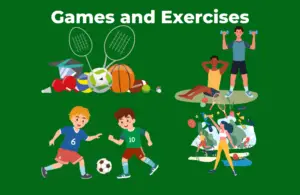This article covers the following areas –
- Adjectives to Describe Personality Traits
- Adjectives to Describe Physical Appearance
- Adjectives to Describe Behavior & Mannerisms
- Final Note
Describing someone in English can significantly enhance our communication skills, whether we’re writing a character sketch, giving feedback, or simply having a conversation. The right adjectives can vividly and accurately depict a person’s personality, appearance, or mannerisms. In this article, we’ll delve into the world of descriptive adjectives to help you enrich your vocabulary.
To describe someone using common adjectives, identify traits fitting their personality, appearance, and behavior. Use positive adjectives like ‘friendly’, negative ones like ‘rude’, or neutral like ‘quiet’. Combine them for nuance and consider the context for accuracy and respectfulness.
Adjectives play a crucial role in language. They add color and depth to our descriptions, allowing us to convey more than just basic facts. In the realm of English, adjectives can transform a simple noun into a compelling story element.
For instance, describing someone as a “kind-hearted teacher” rather than just a “teacher” gives a much richer picture of who they are. Let’s learn some adjectives to describe someone by discussing their personality traits, physical appearance, behavior, mannerisms, etc.
Adjectives to Describe Personality Traits
One of the most immediate things we notice when interacting with others is their personality. The way a person thinks feels, and behaves makes them unique, and the adjectives we use to describe these traits can greatly influence how they are perceived.
Whether in writing or conversation, choosing the right adjectives to describe personality traits can vividly bring a person’s character to life. In this section, we’ll explore various adjectives that can be used to describe positive, negative, and neutral personality traits, providing examples and context to help you understand and use these descriptions effectively.
1. Positive Traits
Positive personality traits are qualities that are generally seen as beneficial or desirable. These traits often contribute to harmonious relationships and are admired in social and professional contexts.
- Amiable: This term describes someone who is friendly and pleasant to be around. Example: “Her amiable nature makes her a favorite among her colleagues.”
- Compassionate: A compassionate person shows strong empathy and care towards others. Example: “His compassionate response to the crisis won him much respect.”
- Meticulous: This adjective describes someone who pays great attention to detail and is very careful and precise in their work. Example: “Her meticulous planning ensured the event’s success.”
Using these positive adjectives can help create a favorable impression of a person, highlighting their strengths and admirable qualities.
2. Negative Traits
Negative personality traits are those that can be seen as undesirable or problematic. They often lead to relationship conflicts or challenges and are generally viewed unfavorably.
- Abrasive: This term describes someone who is harsh and unkind in their interactions, often causing offense. Example: “His abrasive manner often led to conflicts at work.”
- Belligerent: A belligerent person is aggressive and confrontational. Example: “Her belligerent attitude during negotiations didn’t win her any allies.”
- Callous: This adjective is used to describe someone who is insensitive or uncaring about the feelings of others. Example: “His callous comments about the tragedy were criticized by many.”
While these negative adjectives can be useful in certain descriptive contexts, they should be used carefully and with consideration for their impact.
3. Neutral Traits
Neutral personality traits can be seen positively and negatively, depending on the context and perspective.
- Reserved: This describes someone who is not openly expressive or outwardly emotional. Example: “He is reserved, preferring to listen rather than speak in meetings.”
- Frank: A frank person is direct and honest in their communication. Example: “Her frank feedback, while appreciated for its honesty, can sometimes be too blunt.”
- Methodical: This term describes someone who approaches tasks in a systematic, orderly way. Example: “His methodical approach to research ensures thorough results.”
Neutral adjectives are versatile and can be particularly useful in providing a balanced, unbiased description of someone’s personality. They allow for acknowledging different aspects of a person’s character without casting them in a strictly positive or negative light.
Note: Find some more details about these words here.
Adjectives to Describe Physical Appearance
Physical appearance is a noticeable aspect of an individual’s identity, and how we describe it can significantly impact how a person is perceived. Using adjectives to articulate physical characteristics requires both accuracy and sensitivity, especially considering the diverse perceptions of beauty and attractiveness across cultures.
In this section, we’ll explore a range of adjectives that are commonly used to describe general appearance, facial features, and age-related characteristics.
1. General Appearance
General appearance adjectives are broad descriptors that give an overall impression of a person’s physique or stature. They are often the first aspects noticed about a person.
- Tall: This adjective is used to describe someone of above-average height. Example: “He was tall, standing head and shoulders above the crowd.”
- Slender: A slender individual has a slim, thin physique. Example: “She had a slender, graceful, elegant figure.”
- Athletic: This term is often used to describe a person who has a physically strong, well-built, and fit appearance. Example: “His athletic build was evident, even under his casual attire.”
These adjectives provide a quick snapshot of someone’s general physical form and are useful in painting a basic picture of their appearance.
2. Facial Features
Describing facial features requires focusing on specific aspects of the face. These adjectives can be particularly helpful in identifying or distinguishing individuals.
- Bearded: This term is used to describe someone who has a beard. Example: “The man had a thick, bearded face, which gave him a distinguished look.”
- Freckled: Used to describe someone with a scattering of small, pigmented spots on their skin. Example: “Her face was charmingly freckled, adding to her youthful appearance.”
- Bright-eyed: This adjective conveys a sense of liveliness or alertness in a person’s eyes. Example: “The child was bright-eyed with curiosity during the entire lecture.”
Facial feature adjectives are specific and detailed, helping to create a more vivid and accurate visual description.
3. Age-Related Descriptions
Age-related adjectives provide an estimate of a person’s age group, often based on their physical appearance.
- Youthful: This term describes someone who appears young or has features associated with youth. Example: “Despite his age, he had a youthful energy and appearance.”
- Middle-aged: A middle-aged person is typically perceived to be between the ages of about 40 and 60. Example: “The middle-aged woman displayed a confidence that comes with experience.”
- Elderly: This adjective describes someone who appears to be in their senior years. Example: “The elderly gentleman walked slowly, leaning on his cane for support.”
Age-related descriptions should be used considerately, acknowledging that age can be a sensitive subject for many people. These adjectives are helpful in giving a general idea of a person’s age bracket without being overly specific.
Note: Find some more details about these words here.
Adjectives to Describe Behavior & Mannerisms
Behavior and mannerisms are like the unspoken language of personality, revealing much about a person’s character and temperament. How individuals act and conduct themselves in various situations can be effectively described using specific adjectives. This nuanced form of description is crucial for painting a more comprehensive picture of a person beyond mere physical attributes.
In this section, we will explore adjectives that articulate both positive and negative aspects of a person’s behavior and mannerisms, offering examples to illustrate how these adjectives can be used effectively in sentences.
1. Positive Behaviors
Positive behavioral adjectives highlight the admirable or pleasant aspects of a person’s actions and demeanor. These traits are often appreciated in social and professional settings.
- Diligent: This adjective describes someone who is hardworking and pays careful attention to detail. Example: “She was diligent in her studies, ensuring she understood each topic thoroughly.”
- Graceful: Used to describe someone who moves in a smooth, controlled, and attractive way, or handles situations with calm and dignity. Example: “He handled the difficult negotiation with a graceful ease that won everyone’s respect.”
- Articulate: This term describes someone who expresses themselves in a clear and effective manner. Example: “Her articulate presentation made complex subjects easy to understand.”
These adjectives not only describe actions but subtly convey these behaviors’ positive impact on others.
2. Negative Behaviors
Negative behavioral adjectives reflect behavior aspects often viewed as problematic or undesirable. These descriptions can be crucial in certain narrative contexts but should be used with sensitivity.
- Clumsy: This adjective is used for someone who often has accidents or makes mistakes, typically because of carelessness or awkward movements. Example: “His clumsy attempt at fixing the vase only resulted in more damage.”
- Loud: Used to describe someone who speaks or laughs with a high volume, often attracting attention or causing disturbance. Example: “His loud laughter often disrupted the quiet ambiance of the library.”
- Obnoxious: This term refers to someone who is extremely unpleasant, especially in a way that is offensive or annoying. Example: “Her obnoxious behavior at the party alienated many of the guests.”
While these adjectives are effective for describing less favorable traits, it’s important to use them in a way that remains respectful and considerate of individual differences.
Note: Find some more details about these words here.
Final Note
Effectively describing someone in English involves carefully selecting adjectives that accurately capture their personality, appearance, and behavior. From highlighting positive traits that foster admiration to pointing out negative aspects with sensitivity and observing neutral characteristics that offer balanced perspectives, the art of description is pivotal in enriching our expressions and interactions.
Additionally, the context, combination of adjectives for nuance, avoidance of stereotypes, use of metaphors and similes, and the observation of subtleties play crucial roles in crafting vivid and respectful descriptions. By applying these principles, one can achieve a more nuanced and empathetic understanding of the people around us.






